Starting a company feels like booting up the toughest game you’ve ever played. The clock is ticking, and there are no checkpoints. This blueprint turns that chaos into clear levels you can beat one by one.
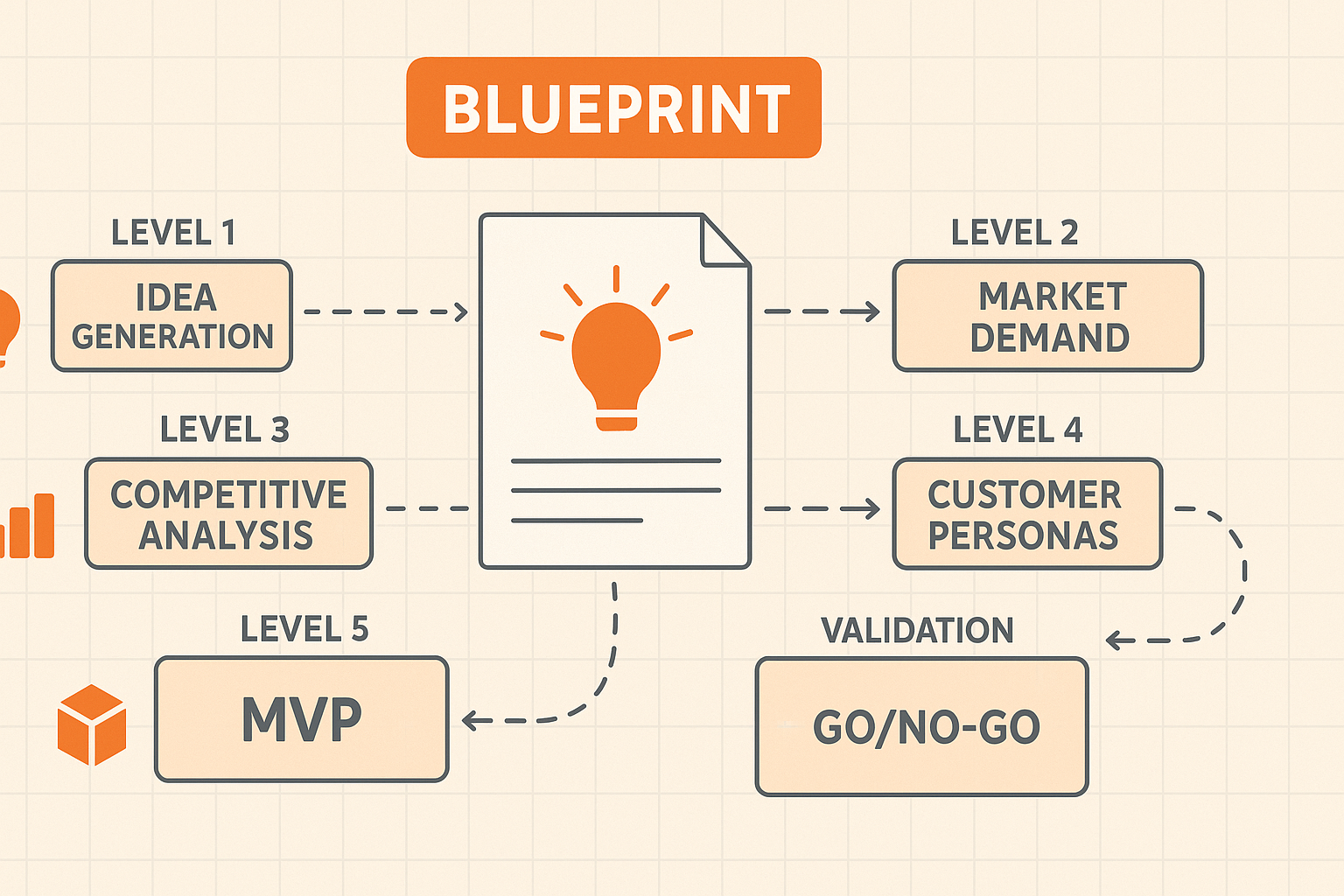
Step 1: Idea Generation
Goal: List, score, and pick your top ideas.
Success Metric: 5 ideas ranked and shared with 10 friends for feedback.
- Open a blank doc.
- In five minutes, list 25 things that excite or frustrate you.
- Score each idea: Passion × Market × Skill (1–10 scale).
- Note replies and refine your list.
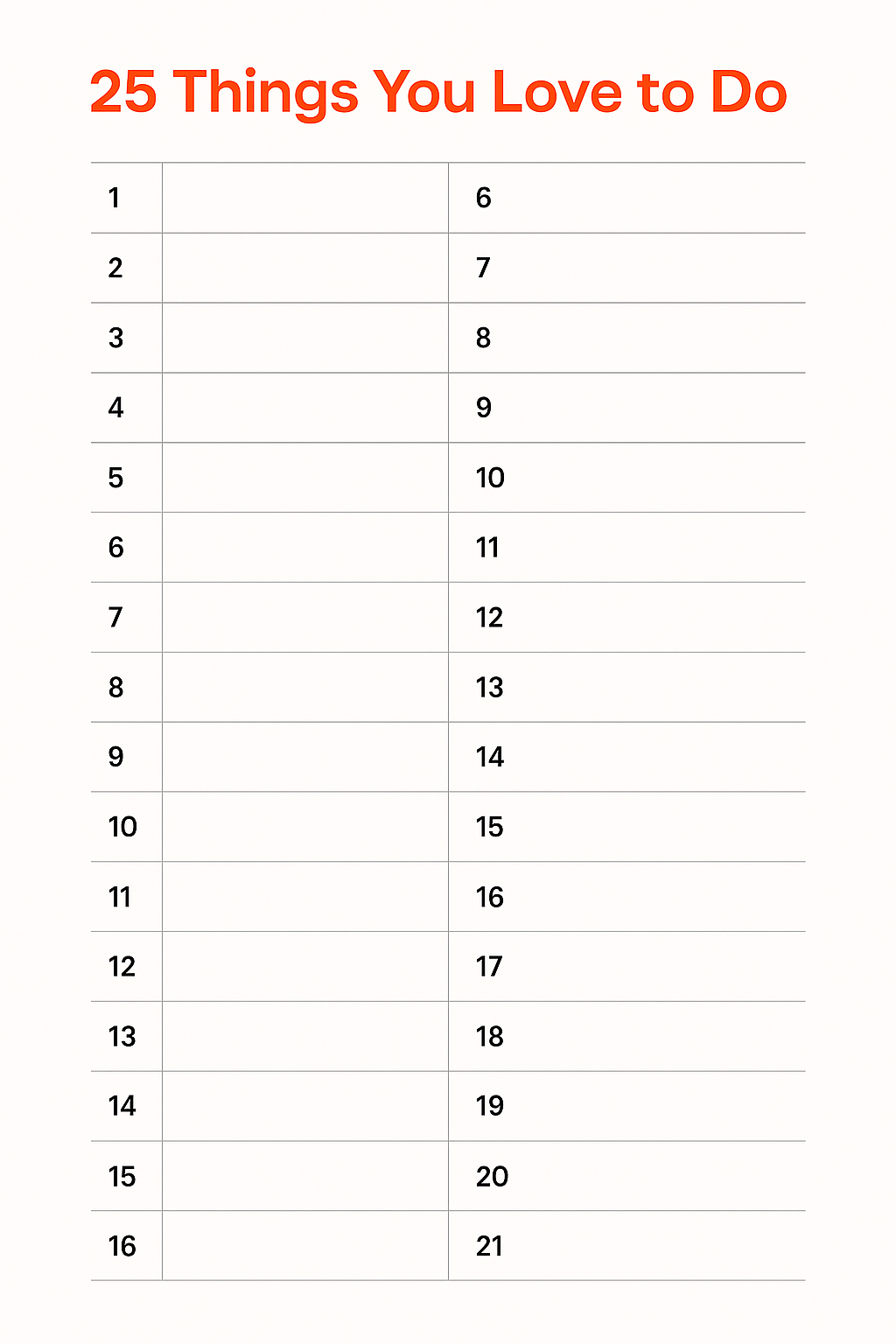
Sort, keep the top 5, and send this question to 10 trusted contacts:
“Which idea would you pay for, and why?”
Recommended action: Block 30 minutes of distraction-free time to finish the list and scoring.
Step 2: Market Demand Check
Goal: Prove that people have already spent money to solve this problem.
Success Metric: Market ≥ 100k people spending ≥ $100/year.
- Google Trends: Look for steady or rising interest over 5 years.
- SimilarWeb & competitor sites: Estimate traffic and pricing.
- Language mining: Read Amazon 2-star reviews, Reddit threads, and tweets for pain points.
Recommended Action: Use spreadsheet software like Google Sheets or Microsoft Excel to record market size numbers.
Step 3: Competition Scan
Goal: Spot gaps you can own.
Success Metric: 3 clear advantages over current options.
- List direct products, DIY fixes (spreadsheets), and “do nothing.”
- Chart their strengths, weaknesses, and prices.
- Highlight spots where users complain or features feel clunky.
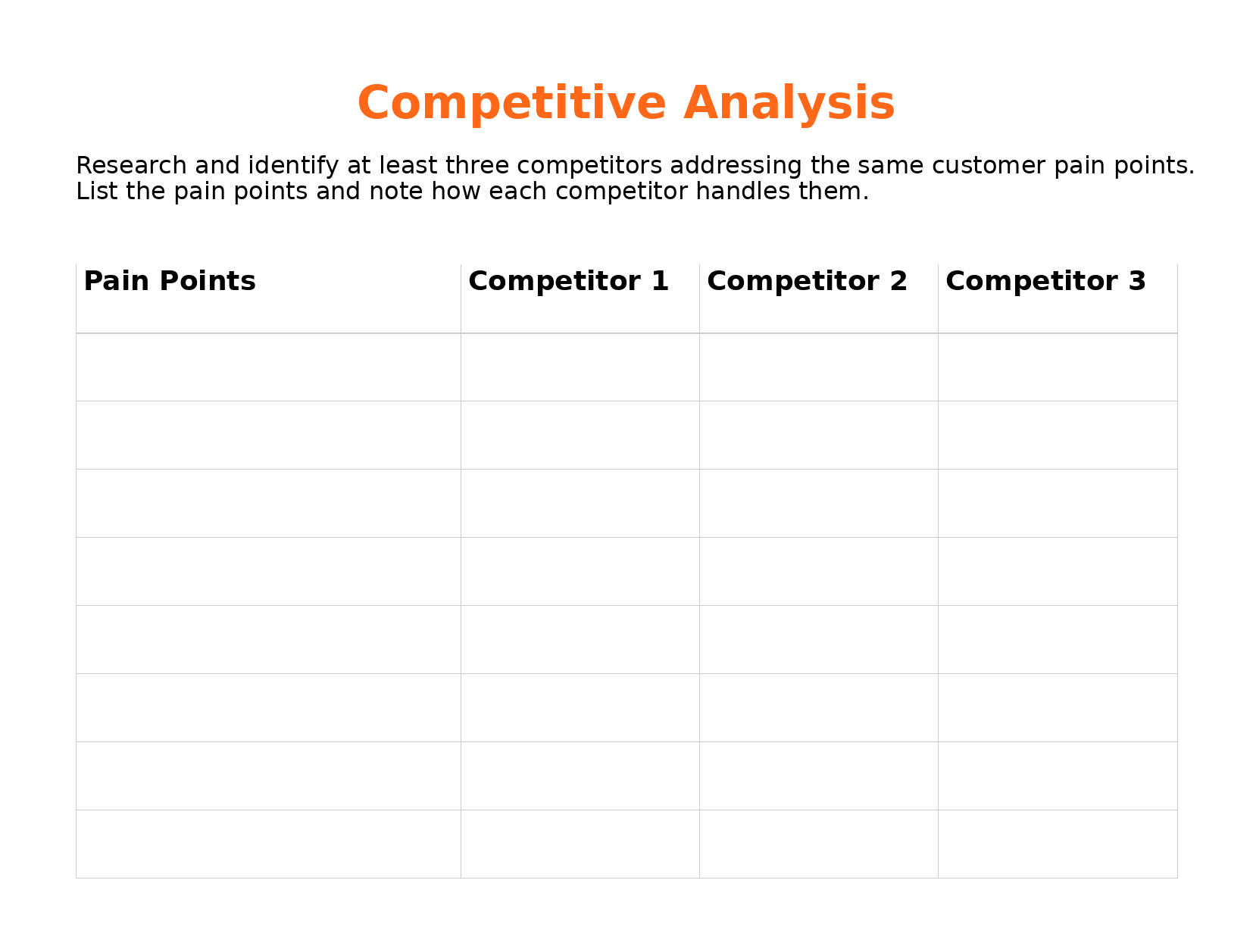
Recommended Action: Write one sentence for each advantage you could offer.
Step 4: Customer Persona and Characteristics
Goal: Know exactly whom you serve.
Success Metric: 2–3 personas covering 80 % of the market.
- Interview 10 real people; ask about the last time the problem hit.
- Survey 50+ prospects for habits, budgets, and decision triggers.
- Draft persona cards: demographics, daily workflow, biggest headache.
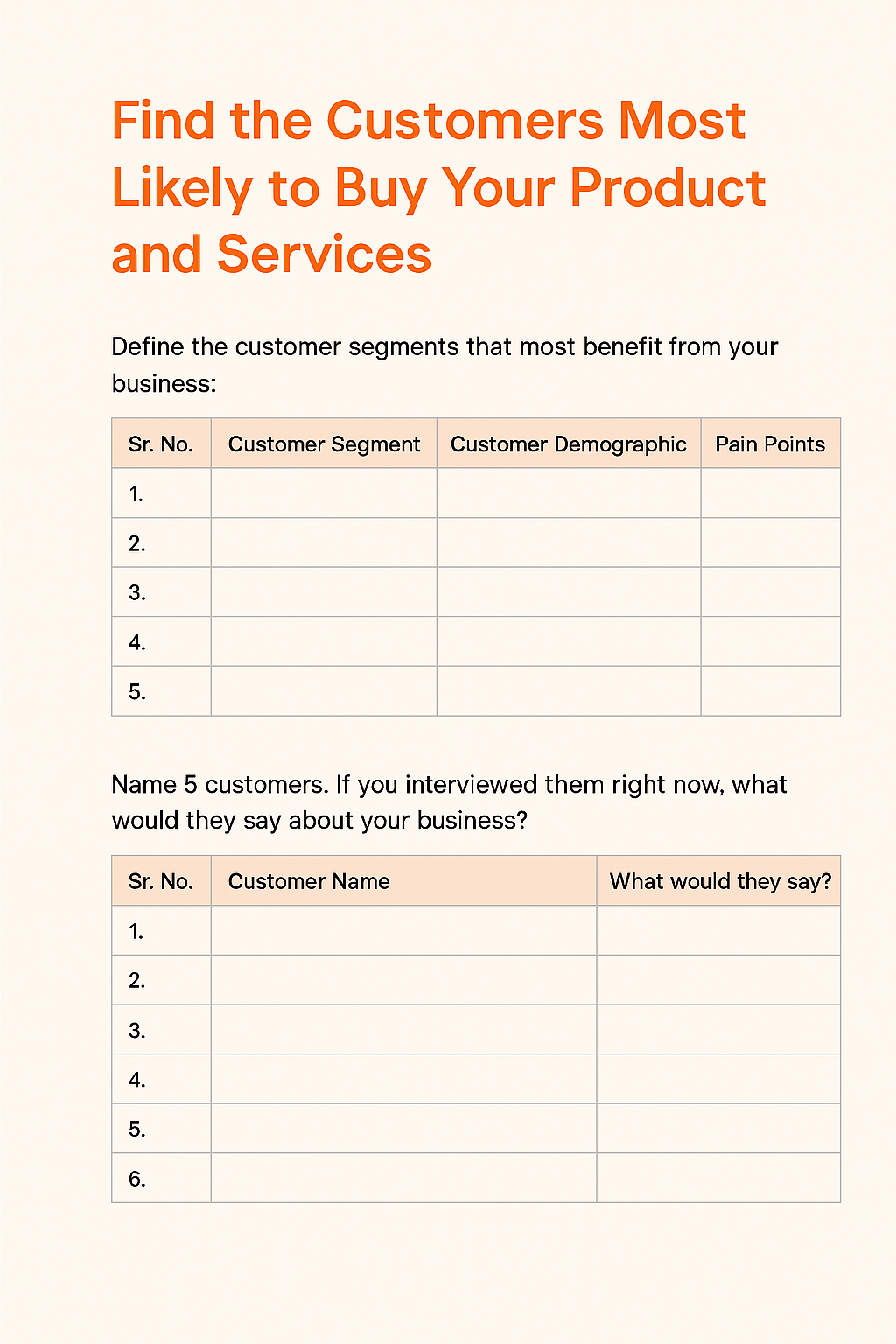
Recommended Action: Schedule the first three interviews within a week.
Step 5: Use AI Tools to MVP Prototype
Goal: Test the core promise fast.
Success Metric: 100 users interact and give feedback inside 2 weeks.
Choose one:
- Landing page – pre-sell software/service.
- Concierge/Wizard-of-Oz – deliver manually behind the curtain.
- Clickable demo – show just the main flow.
Track engagement, sign-ups, and comments. Adjust fast.
Recommended Action: Pick the right tool and get your MVP ready before the weekend.
Step 6: Customer Validation
Goal: Verify people will pay.
Success Metric: 20 deep interviews + 100 survey responses that confirm need and price point.
- Ask open questions: “Walk me through the last time…”
- Probe price: “What would you pay to erase this pain?”
- Show MVP, stay silent, watch where they stall.
Recommended Action: Draft five interview questions.
Step 7: Go / No-Go Gate
Goal: Decide with data, not hope.
Success Metric: ≥ 80 % of checklist boxes ticked and genuine excitement.
Checklist
✔ Market size & spend confirmed
✔ Three defensible advantages
✔ Users willing to pay the target price
✔ MVP traction
✔ Personal skill/resources fit
If you fall short, recycle insights and return to Level 1.
Recommended Action: Set a calendar date for this review—no later than day 60.
Step 8: Name & Positioning
Goal: Craft a brand people remember.
Success Metric: .com domain secured + clear trademark path.
- Criteria: 1–3 syllables, easy to spell, future-proof.
- Tools: Namelix, Panabee, Namechk, ChatGPT, Claude.
- Legal: Check the applicable rules for business formation in your country.
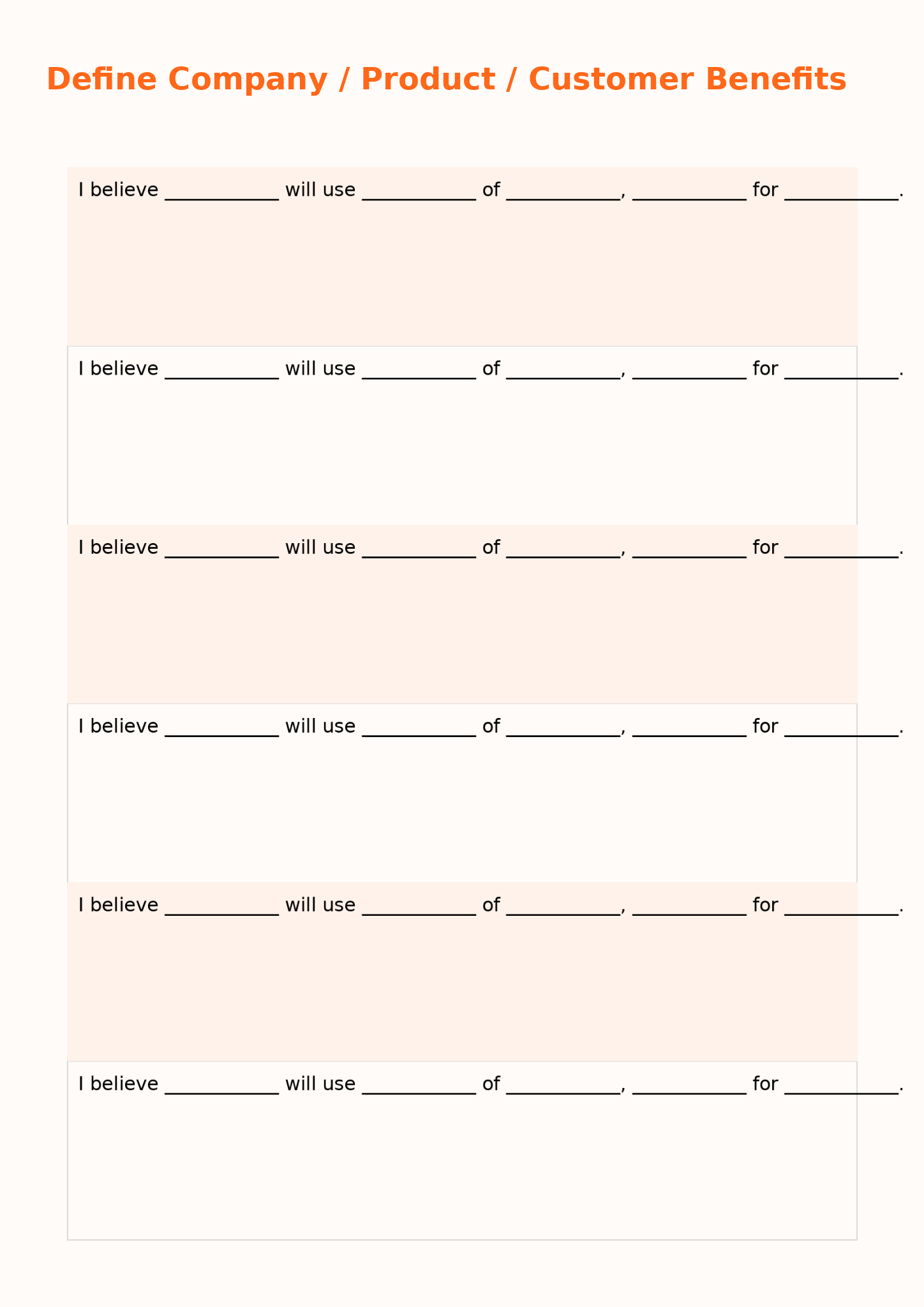
Recommended Action: Brainstorm 20 names in a 15-minute sprint.
Ninety-Day Sprint Map
| Weeks | Focus | Output |
|---|---|---|
| 1–4 | Step 1–3 | Idea list, market data, competitor gaps |
| 5–8 | Step 4–6 | Personas, MVP live, validation data |
| 9–12 | Step 7–8 | Go/No-Go call, brand name, launch prep |
Remember
Ideas are cheap. Execution wins. Block time for Step 1 now—today—not “someday.” Your game is live.
